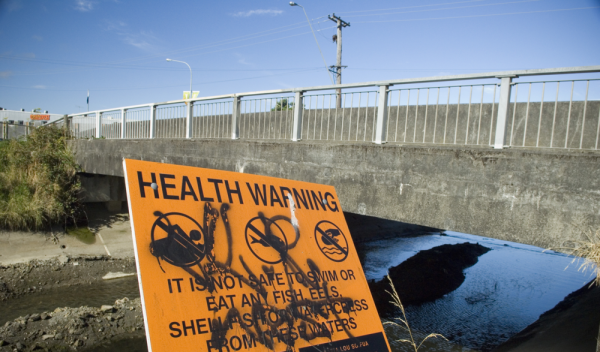New Zealand’s population is increasingly urban. As of 2018, major urban areas in Aotearoa accounted for more than half of the population. As the population grows and urban development expands and intensifies, freshwater environments in urban areas are coming under increasing pressure.
Urban stormwater introduces a wide range of pollutants into waterways. These include sediment from construction sites and copper and zinc from vehicle brake pads, tyres, metal roofing, and industrial yards, which can be toxic to freshwater species.
Current default guideline values for copper and zinc are set out in the Australia New Zealand guidelines (ANZG). A study undertaken by NIWA in 2017 studied sites at a subset of rivers and streams in predominantly urban areas in Auckland, Wellington, and Christchurch. The study found that the median concentrations exceeded default guideline values for the protection of 95% of species at 24 of 55 sites for dissolved zinc, and 7 of 18 sites for dissolved copper.
Aquatic Chemist Jenni Gadd leads some of NIWA’s research on water quality in urban catchments. Jenni explains that while the water quality issues facing freshwater management in urban catchments are well documented, there are significant challenges for resource managers in deciding where to focus management interventions. Challenges include a lack of water quality data and limitations in predicting water quality outcomes using existing user-friendly models.
Jenni and her team have created the Metal in Urban Streams Tool (MUST) which is a screening model that estimates concentrations of copper and zinc in urban streams.
“MUST is designed to help councils (and others) estimate copper and zinc concentrations in streams where they have little prior knowledge of the conditions, and don’t want to take the route of using a complicated or expensive model.
“MUST can estimate how these concentrations could change through implementing source controls or stormwater treatment,” says Gadd.
The ‘ready-now’ tool allows users to calculate the probability of meeting water quality targets of instream concentration of copper or zinc from inputs of catchment land use and stormwater treatment measures.
The Urban Runoff Quality Information System (URQIS) is also available on the NIWA website. URQIS provides summaries of stormwater and urban stream quality data to the public by accessing a database of urban runoff quality data collected from all over New Zealand.
Both URQIS and MUST can assist councils with freshwater management in urban areas by assisting with predictions of current and future state, and prioritisation of sampling and monitoring to improve cost-efficiency.
Access the MUST tool: https://shinylabs.niwa.co.nz/wq-must/

